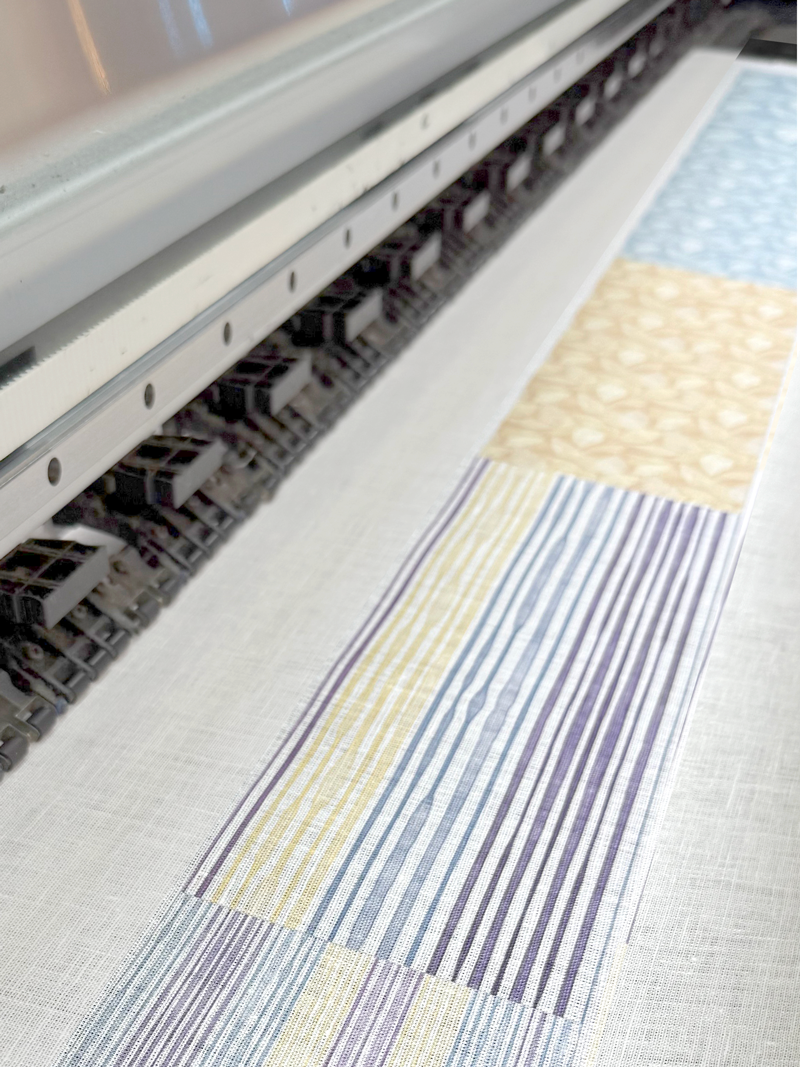From Flax to Fabric: How Linen Is Made
If you’ve ever run your hand over a linen napkin or tea towel and felt that gentle, natural texture, you might have wondered: How does flax become this beautiful fabric?
Linen production is an ancient craft—rooted in nature, refined by time, and carried forward by skilled makers. Understanding the process makes the final product feel even more special, especially when you choose pieces designed to be used and loved for years.
flax in bloom
Here’s a peek into how your moss + bloom linens come to life, from the humble flax plant to the artful textiles in your home.
1. It All Begins With the Flax Plant
Linen originates from the strong, flexible fibers inside the stem of the flax plant. Flax grows easily in cooler climates—especially in the Baltic region (including Lithuania, where my linen comes from!)—requiring:
minimal irrigation
very few fertilizers
almost no pesticides
virtually zero waste
From the start, linen sets a high standard for sustainability.
2. Harvesting With Care
Flax isn’t cut like most crops—it’s gently pulled from the ground, roots and all. This preserves the full length of the fibers, which is essential for creating strong, durable linen fabric.
Skilled farmers have passed down this technique for generations.
3. Retting: Releasing the Fibers Naturally
Once harvested, the flax plants are laid out in the fields where dew, sun, and rain work together to break down the outer layers of the stems. This step, called retting, slowly loosens the fibers so they can be separated.
It’s a patient, natural process—one that contributes to linen’s organic feel and timeless charm.
4. Breaking, Scutching & Hackling
After retting, the flax goes through three traditional refining stages:
Breaking cracks the dried stalks.
Scutching scrapes away the woody parts.
Hackling combs the fibers until they’re silky, clean, and ready for spinning.
These steps haven’t changed much in hundreds of years, honoring the fabric’s long, storied history.
5. Spinning & Weaving
The refined fibers are spun into thread, then woven on looms into linen fabric. This is where linen gets its signature personality: a gently textured weave, subtle slubs, and a natural drape that feels both lived-in and luxurious.
6. Printing the Artwork & Handcrafting the Final Product
This is where my art becomes textile.
My watercolor designs are printed directly onto the linen using premium, water-based pigmented inks sourced from Japan—high-quality, eco-friendly pigments known for their rich color and long-lasting vibrancy. These inks integrate beautifully with the natural fibers, keeping the fabric soft while ensuring the artwork won’t fade with washing.
After printing, the fabric is cut and sewn by skilled artisans who specialize in linen craftsmanship. Every napkin, tea towel, and home textile is assembled with precision, honoring both the material and the artwork.
7. Stonewashing for Softness & Character
After the pieces are sewn, they undergo a gentle stonewashing process. Natural pumice stones tumble with the fabric, relaxing the fibers and adding softness, movement, and a beautiful lived-in texture.
Stonewashing may create slight variations from piece to piece—subtle signs of handcrafted quality. Over time, your linen will continue to soften even more, gaining character with every wash.
8. A Final Touch of Artful Practicality
Once the stonewashed linens are complete, they’re ready to be folded, bundled, and prepared for their new homes. Each piece balances beauty and everyday function—meant to be used, enjoyed, and integrated into your daily rhythms.
Linen’s journey from plant to finished product is thoughtful, slow, and deeply rooted in tradition.
It’s a story I’m proud to carry forward with every moss + bloom textile.





